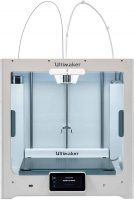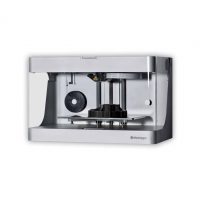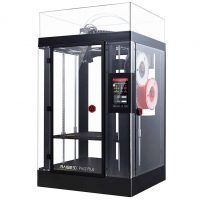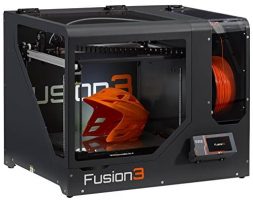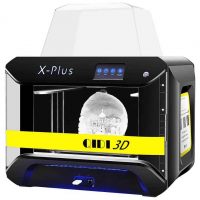Best Carbon Fiber 3D Printer in 2021
Top recommendations for those that need strong yet lightweight prints
- Last Updated Jun 21, 2021
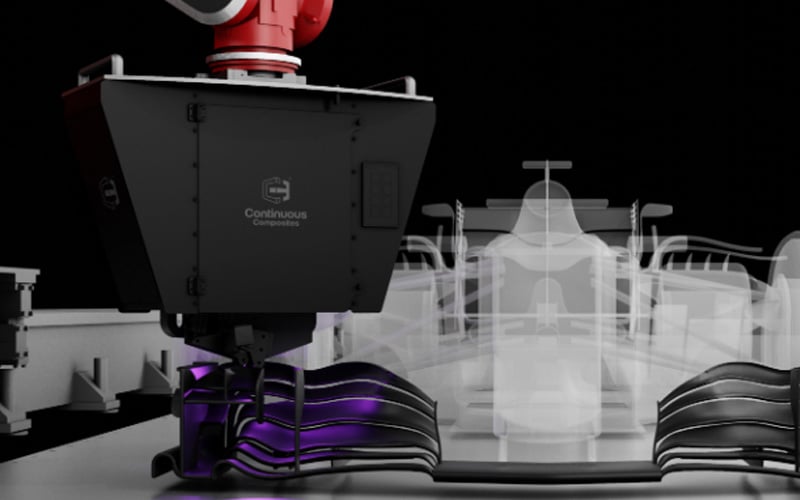
From Formula 1 parts to road bike frames by way of aerospace applications, carbon fiber manufacturing techniques have come a long way from their origins as a novel solution for light bulb filament over one hundred years ago.
Prized for being as strong as metal but considerably lighter, carbon fiber has unsurprisingly found its way into the world of 3D printing, where it’s used alongside traditional 3D printing materials to drastically improve the stiffness, heat resistant qualities, and ruggedness of everything from prototypes to functional parts.
Whether you’re a professional outfit looking to level up your manufacturing with a carbon fiber 3D printer or a solo designer with some cash to spare, you’ve come to the right place. While carbon fiber printing is relatively niche, not to say expensive, there are quite a few options to choose from, and there are naturally concerns about choosing the right one when so much money is involved. Nothing stings quite as much as spending thousands on a dud.
Not to worry, in today’s guide, we’re laser-focused on showcasing some of the best carbon fiber 3D printers.
Products at a Glance
How We Picked
When assessing carbon fiber 3D printers, we relied primarily on the quality of the printed products produced by this or that printer. Alongside, we also focused on build quality, ease of use, build volume, resolution, connectivity, supported material, and features such as auto bed leveling, extruder temperature, nozzle diameter and quality, and so on.
Below, you’ll find five hand-picked carbon fiber 3D printers that, in our opinion, are among the best out there. We’ve broken these down into different categories that highlight in what respect they stump the competition. You’ll find a review of each where we highlight the top features and specifications of each alongside a look at what each brings to the table.
Naturally, we’ve had to make some tough decisions and couldn’t include all the best carbon fiber printers out there. No hard feelings if we missed out on your top choice, and don’t hesitate to bring it to our attention in the comments section below.
Best Carbon Fiber 3D Printer in 2021
Compatibility with a huge range of materials including carbon fiber
Superb print quality
20 to 600-micron resolution
Dual extruders
Auto active bed leveling
Expensive
Slow print speeds
Designed to slide into professional 3D printing setups, the $6,000 Ultimaker S5 is by no means cheap compared to most 3D printers. Still, at a third of the cost of printers like the Markforged Mark Two, it’s a far more manageable expense given the excellent overall print quality, the range of top features, and the work Ultimaker put in to make using the printer both easy and enjoyable.
The Ultimaker S5 features a sizable build volume of 330 m x 240 mm x 300 mm, auto bed leveling, dual extruders, heated glass build plate, 20 to 600-micron resolution, Wi-Fi/Ethernet/USB connectivity, filament flow sensor, and an intuitive color touch screen.
Like all 3D printers, the Ultimaker S5 has its flaws. It struggles with print speeds that fall on the sluggish side of things. We feel this is a reasonable compromise to make, given the Ultimaker S5 produces exquisite quality results whatever you throw at it.
This consistent quality applies to all supported material types, notably carbon fiber-based filaments, despite the Ultimaker not specifically targeting that application. That is, as long as you invest in Ultimaker’s abrasive composite material wear-resistant ruby coned Print Core CC 0.6 nozzle, which will set you back a further $300 – hardly a huge expense for most pro-level outfits, especially if you are already putting down $6,000 for the printer itself. And, it’s an easy process thanks to the S5’s easy load/unload swappable print core system.
For those that want a printer that can juggle everything from PLA to wood fill by way of carbon fiber, the Ultimaker S5 is a workhorse that will level up any small business, design studio, or serious engineering setup.
Desktop form factor
Industrial-grade results
Support for carbon fiber, fiberglass, kevlar, nylon
Slicing software
Expensive
Build volume is small for industrial printers
The continuous fiber Markforged Mark Two 3D printer condenses an industrial-grade machine down to a desktop form factor to produce high-grade prints that unify Markforges’s nylon-micro carbon composite and a fiber of the user’s choice, including carbon fiber, via a two nozzle arrangement.
Results boast high tensile strength, superb surface finish, and precise details, all with the lightweight attributes provided by carbon fiber – suitable for a wide range of industrial applications, consumer-grade products, and versatile replacements for machined aluminum parts. Material support extends to carbon fiber, fiberglass, and kevlar, all prized for durability, strength, and stiffness.
The build volume dwarfs that of most consumer-grade printers at 584 mm x 330 mm x 355 mm, but is commensurate to the overall footprint of the printer and falls behind what you’d expect from industrial printers, which is a reasonable compromise given the convenient format. Print resolution ranges from a minimum of 100 microns to 200 microns, allowing for fine details and larger hefty layer prints.
We also like the proprietary browser-based Eiger Cloud slicing software provided alongside the Markforged Mark Two. Eiger strikes a careful balance between ease of use and plenty of advanced options to hone in on the subtleties of producing high-quality parts.
It will come as no surprise that the Markforged Mark Two demands an eye-watering $15,000, outpricing hobbyists and even enthusiasts.
Large 305 mm x 305 mm x 605 mm build volume
Versatile
Dual extrusion printing
Broad material support for temps up to 300-degrees
10 micron resolution
Expensive
Inconvenient spool holder design
For large-format carbon fiber prints, we recommend the Raise3D Pro2 Plus, and its colossal 305 mm x 305 mm x 605 mm build volume, which is particularly well equipped for projects that require ample vertical space.
The Raise3D Pro2 Plus oozes with features including dual extruders with retracting nozzles, filament sensor, fully enclosed design, power outage resume function, 10-micron resolution, magnetic silicone heated bed, built-in camera, pre-calibrated leveling, Wi-Fi/LAN/USB connectivity, and a stellar user experience through the 7-inch touch screen, ideaMaker slicing software, and remote user interface.
Like the Ultimaker 5S, carbon fiber printing on the Raise3D Pro2 Plus requires a quick swap to a hardened nozzle suitable for abrasive composite materials. A cheap way to further extend the versatility of an already impressive machine and one that delivers near-pristine results. This consistent performance also extends to working with a long list of supported filament types: PLA, ABS, HIPS, PC, TPU, TPE, NYLON, PETG, ASA, PP, glass fiber, metals fill, wood fill, and more. The only real ceiling is the nozzle temperature cap of 300-degrees, which still leaves an imposing range of materials.
One minor gripe we have with the Raise3D Pro2 Plus is the slight oversight Raise3D made by not incorporating suitable holders to support larger filament spools. A perplexing omission for a printer focused on delivering large-scale prints that require far more filament than your average print. You can still fashion a makeshift solution to counter this by using the side-mounted filament feed holes, though.
All-in-one cabinet-style design
Interchangeable hardened steel nozzles
Fast print speeds
20 micron resolution
Material compatibility
No wireless connectivity
The Fusion3 F410 sets itself apart in the professional-grade 3D printer space by keeping to a comparatively affordable price point while still offering the perfect blend of precision, speed, and reliability required by businesses, engineers, and designers.
Unlike the offerings from Ultimaker and Raise3D, carbon fiber printing works out of the box thanks to a convenient, interchangeable hardened steel nozzle system that is a breeze to use. The printer packages in three nozzle bore diameters – 0.4 mm, 0.6 mm, 0.8mm – offering plenty of scope for everything from detailed small prototypes to thick layered functional parts.
Other features include 20-micron resolution, 0.003-inch print tolerances, 250 mm/s print speeds, an E3D Volcano print head, 355 mm x 355 mm x 315 mm build volume, heated glass bed, automatic bed leveling, 4.7″ full-color touchscreen, a proprietary motion control Kevlar cable system, rigid fully-enclosed metal design, and compatibility with a wide variety of materials, including PLA, ABS, ASA, PETG, fiberglass filled, nylon, flexibles, polyester, carbon fiber-filled, and more.
It’s worth noting that connectivity is limited to an SD card and Ethernet with no wireless option. However, Fusion does sell an add-on external WiFi adapter kit for roughly $50 that converts the LAN port on the printer to a wireless signal.
Finally, you can buy an optional heavy-duty rolling cart alongside the Fusion3 F410, which also doubles as a storage cabinet for filament and accessories, perfect for an all-in-one contained 3D printing station.
Compatible Material:Acrylonitrile Butadiene Styrene , Polylactic Acid , Nylon , Thermoplastic Polyurethane , Carbon Fiber , Polycarbonate
Item Weight:50.7 pounds
Material:acrylic
Color:multi-color
Two interchangeable extruders
Works with numerous materials
Affordable price point
Decent quality prints
No auto bed leveling
Small build volume compared to pro-grade printers
Reading our brief assessment of the 3D printers above, you may be getting the sense that carbon fiber printing is strictly reserved for professional outfits willing and able to invest thousands of dollars. While this is primarily the case, especially to obtain the best print results, far more affordable hobbyists-grade printers capable of handling carbon fiber projects exist, albeit with some substantial compromises to features and print quality.
Among them, the QIDI TECH X-plus is one of the more capable options, priced at ‘only’ $800. It offers a 270 mm x 200 mm x 200 mm build volume, 50 to 400-micron resolution, 0.4 mm nozzle, double-sided 100-degrees heated bed (one for low-temp materials and one for high-temp materials), sturdy aluminum frame, assisted manual bed leveling, Wi-Fi/USB/Ethernet connectivity, filament sensor, power outage print recovery, and two extruder types – one for common materials like PLA, ABS, and TPU, and another that can reach a temperature of 300-degrees for abrasive materials like nylon and carbon fiber fill.
Print quality isn’t on par with the printers above but is nevertheless very good for this price point, particularly for carbon fiber parts using the second extruder setup. Layering is relatively prominent, it has to be said, but overall we’d be hard-pressed to expect more from such an affordable semi-professional 3D printer.
Things To Consider
FAQs
Our Verdict
Boasting compatibility with a broad array of materials, including carbon fiber with a simple nozzle swap, superb print results, and plenty of quality of life features that score points for ease of use, the Ultimaker S5 takes the crown as our top pick for the best carbon fiber 3D printer.
A close second is the Markforged Mark Two, which offers an industrial-grade print in a footprint that fits in more modest office setups. The print quality is nothing short of phenomenally, and the printer can tackle everything from functional parts to intricate prototyping.
For larger builds, the Raise3D Pro2 Plus offers a massive build volume, broad material support, including carbon fiber, fine-detail 10-micron resolution, and top-quality prints to match. The price tag sees this one suitable for professional outfits that want consistent results with all the quality of life trimmings.
The Fusion3 F410 delivers an attractive mix of precision, speed, and reliability, all at a very reasonable price point for a professional-grade 3D printer suitable for carbon fiber composite materials. The all-in-one cabinet design and interchangeable hardened steel nozzle system are highlights. The printer delivers on virtually all fronts making it a top choice for designers, engineers, and small businesses.
Lastly, you don’t need to spend a fortune to dabble in carbon fiber printing and obtain good results. The QIDI TECH X-plus is a top choice in that respect.
Don’t hesitate to get in touch in the comment section below with any questions, concerns, or suggestions.

